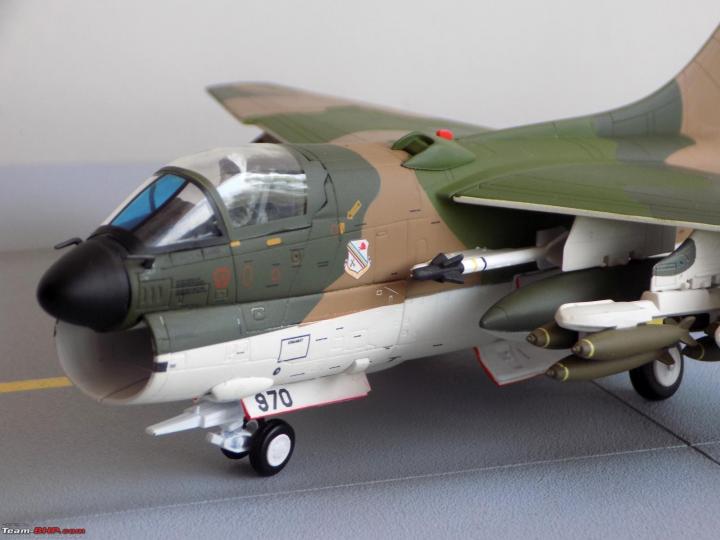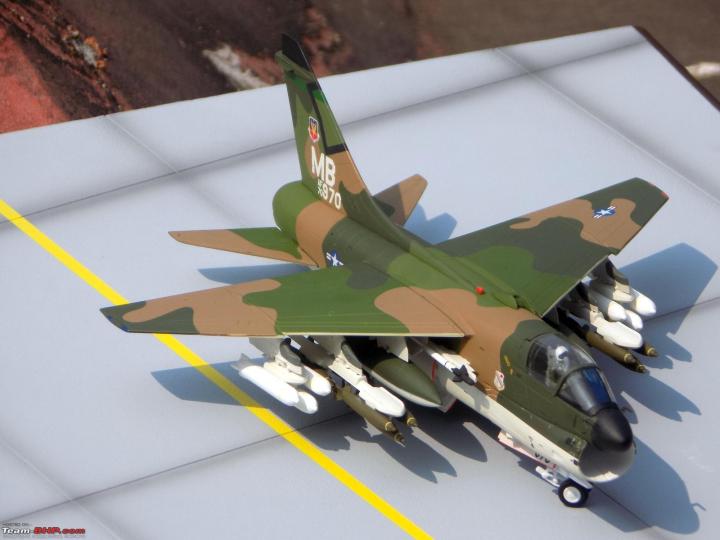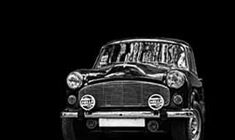News
A-7D Corsair II US Air Force aircraft: History & scale model
The implementation of a fully instrumented HUD in the A-7 was a monumental revolution in technology that changed air combat forever.
BHPian skanchan95 recently shared this with other enthusiasts.
1:72 Ling-Temco-Vought A-7D Corsair II #70-0970, 356th TFS "Green Demons", 354th TFW, United States Air Force, Korat AB, Thailand, 1972 (JC Wings)
“The mission was to drop bombs and destroy the target, and the A-7’s ability to drop great bombs is unprecedented. It wasn’t just more accurate than the F-100, it was better than any other weapons system designed to deliver ordnance!” - Captain Don Cornell, USAF F-100/A-7 pilot.
US Air Force A-7Ds flew a total of 12,928 combat sorties during the war with only six losses - the lowest of any U.S. fighter in the theater. The aircraft was second only to Boeing B-52 Stratofortress in the amount of ordnance dropped on Hanoi and dropped more bombs per sortie with greater accuracy than any other U.S. attack aircraft.
The A-7 Corsair II was developed during the early 1960s as a carrier-capable replacement for the Navy's Douglas A-4 Skyhawks. The A-7's design was derived from the Vought F-8 Crusader AKA the Last Gunfighter. In comparison with the F-8, the A-7 is both smaller and restricted to subsonic speeds, its airframe being simpler and cheaper to produce.

US Navy A-7 refueling an F-8. Easy to see how the A-7 was derived from the F-8, which was longer and sleeker.
Initially adopted by US Navy, the A-7 proved attractive to other services, soon being adopted by the United States Air Force (USAF) and the Air National Guard (ANG) to replace their ageing Douglas A-1 Skyraider and North American F-100 Super Sabre fleets. The A-7 was also exported to Greece in the 1970s and to Portugal in the late 1980s. The USAF and USN opted to retire their remaining examples of the type in 1991, followed by the ANG in 1993 and the Portuguese Air Force in 1999. The A-7 was largely replaced by newer generation fighters such as the F-16 and the F/A-18 Hornet. The final A-7 operator, the Hellenic Air Force, withdrew the last A-7s during 2014.
The A-7 was the first operational American combat aircraft to get a fully instrumented HUD. This new addition was a monumental revolution in technology that changed air combat forever.
A-7D Corsair II
The A-7D was the purpose-built Version built for the USAF (the B, C & E variants were built for the US Navy).
The United States Army has not been permitted to operate fixed-wing combat aircraft since the establishment of an independent United States Air Force (USAF) in 1947. To meet its need for close air support of its troops in South Vietnam, the Army pressured the Air Force to procure a specialized subsonic close air support fixed-wing aircraft that would suit its needs better than the general-purpose supersonic aircraft that the USAF preferred.
The Vought A-7 seemed to be a relatively quick and inexpensive way to satisfy this need. However, the USAF was initially reluctant to take on yet another Navy-designed aircraft, but Secretary of Defense Robert McNamara was insistent. On 5 November 1965, Secretary of the Air Force Harold Brown and USAF Chief of Staff General John P. McConnell announced that they had decided to order a version of the Corsair II, designated A-7D, for the Tactical Air Command.
The A-7D differed from the Navy's Corsair II in several ways. For one, the USAF insisted on significantly more power for its Corsair II version, and it selected the Allison TF41-A-1 turbofan engine, which was a license-built version of the Rolls-Royce Spey engine. It offered a thrust of 14,500 lb ft (64,000 N), over 2,000 lb ft (8,900 N) greater than that of the TF30 that powered the Navy's Corsair IIs. Other changes included a head-up display, a new avionics package, and an M61A1 rotary cannon in place of the two single-barreled 20-mm cannon. Also included was a computerized navigation/weapons delivery system with AN/APQ-126 radar and a head-up display.
The A-7D had a boom flight refueling receptacle in place of the Navy's retractable starboard-side probe/drogue system, with the boom receptacle being on the top of the A-7D's fuselage behind the cockpit and offset to port.
Taking over from Douglas A-1 Skyraiders and F-100 Super Sabres (and adopting their call sign of "Sandy"), the A-7's higher speed was somewhat detrimental for escorting the helicopters and leading CSAR missions but the aircraft's high endurance and durability were an asset and it performed admirably.
A-7 HUD

A-7D 70-0970 & the Marathon CSAR mission

Major Colin A Clarke served with the 356th TFS of the 354th TFW at Myrtle Beach AFB, South Carolina, from May 1971 to March 1974. During this time, he deployed to Southeast Asia as an A-7 Sandy pilot, where he flew an additional 73 combat missions from Korat Royal Thai AFB, Thailand, between October 1972 and March 1973. During his 385 combat missions in Southeast Asia, Clarke was shot down and rescued twice, first on August 18, 1964, and a second time while flying as a Misty FAC on January 22, 1969. He served his first tour of duty in Vietnam in 1962-63, and the second tour in 1964-65. He earned the Silver Star on his third Vietnam tour in 1968-69, and the Air Force Cross during his fourth tour in Vietnam in 1972-73. In all, he completed 385 combat missions in Southeast Asia, and was shot down and rescued twice. He later served with the Military Assistance Advisory Group in Tehran, Iran, until he was evacuated due to the revolution that led to the Iranian hostage crisis. He retired from the US Air Force on August 1, 1981.
On 18 November 1972, Major Clarke was flying this particular A-7D S/N 70-0790 from Korat on a nine-hour rescue support mission over Thanh Hóa, Vietnam for a CSAR mission to rescue a downed F-105F Wild Weasel crew. Maj. Clarke made a number of passes through low cloud to locate the downed F-105 Wild Weasel crew through heavy AA fire and directed a HH-53 to do a DF letdown on him for the rescue, for which he received the Air Force Cross.
The mission lasted a total of 8.8 hours during which Clarke and his wingman took a number of hits from 0.50 cal (12.7 mm) anti-aircraft fire. For his actions in coordinating the rescue, Clarke was awarded the Air Force Cross, the USAF's second-highest decoration for valor.

Major Colin Arnold "Arnie" Clarke
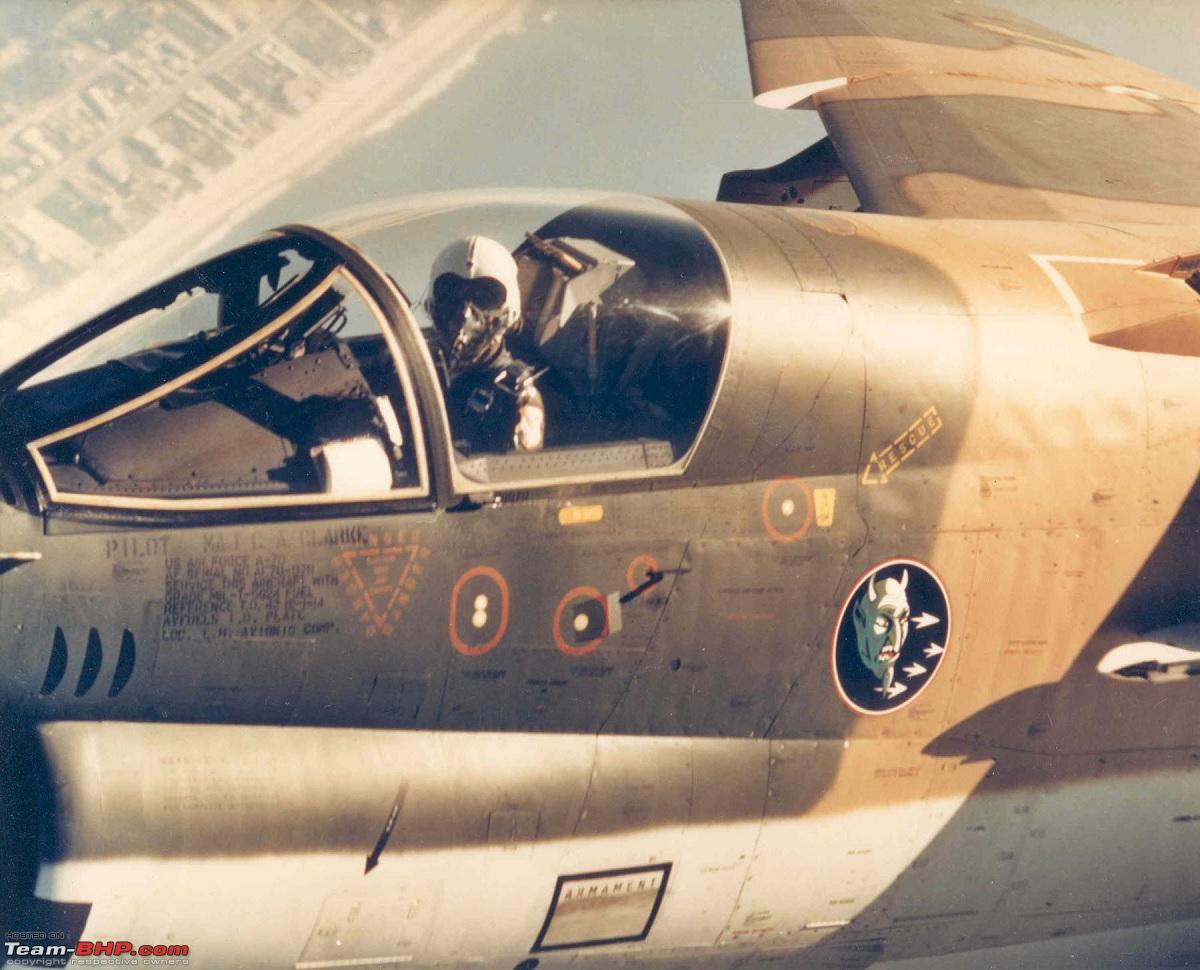
Major Clarke's A-7D in flight, with him at the controls.

A-7D Corsair IIs 70-0976, 70-0989 and 70-0970 of the 354th Tactical Fighter Wing in the skies over Southeast Asia. '976 and '989 were retired to AMARC in 1992, '970 (Major Clarke's bird) is on permanent display at the National Museum of the United States Air Force, Wright-Patterson AFB, Ohio.

His A-7D (AF Serial No. 70-0970) was eventually placed on display on 31 January 1992 at the National Museum of the United States Air Force at Wright-Patterson AFB, Ohio.
Major Clarke's Air Force Cross Citation reads
The President of the United States of America, authorized by Title 10, Section 8742, United States Code, takes pleasure in presenting the Air Force Cross to Major Colin Arnold "Arnie" Clarke (AFSN: 0-73845), United States Air Force, for extraordinary heroism in military operations against an opposing armed force as Pilot of an A-7 aircraft of the 354th Tactical Fighter Squadron, 355th Tactical Fighter Wing, Korat Royal Thai Air Base, Thailand, in action as On-Scene Commander for search and rescue operations over North Vietnam, on 18 November 1972. On that date, Major Clarke directed an extremely complex mission that resulted in the successful recovery of two downed airmen despite adverse weather, mountainous terrain, and intense hostile ground fire. Disregarding these hazards, his own safety, and battle damage to his aircraft, he personally guided the rescue helicopter to the survivors' location, suppressed hostile defenses, and continued to direct rescue efforts even though he sustained additional damage to his aircraft. Through his extraordinary heroism, superb airmanship, and aggressiveness in the face of the enemy, Major Clarke reflected the highest credit upon himself and the United States Air Force.
General characteristics
- Crew: 1
- Length: 46 ft 2 in (14.06 m)
- Wingspan: 38 ft 9 in (11.8 m)
- Width: 23 ft 9 in (7.24 m) wings folded
- Height: 16 ft 1 in (4.9 m)
- Wing area: 374.9 sq ft (34.83 m2)
- Airfoil: NACA 65A007 root and tip
- Empty weight: 19,127 lb (8,676 kg)
- Max takeoff weight: 41,998 lb (19,050 kg) overload condition
- Fuel capacity: 1,338 US gal (5,060 l; 1,114 imp gal) (10,200 lb (4,600 kg)) internal
- Powerplant: 1 × Allison TF41-A-2 non-afterburning turbofan engine, 15,000 lbf (66.7 kN) thrust
Performance
- Maximum speed: 600 kn (690 mph, 1,100 km/h) at sea level
- 562 kn (1,041 km/h; 647 mph) at 5,000 ft (1,500 m) with 12x Mk82 bombs
- 595 kn (1,102 km/h; 685 mph) at 5,000 ft (1,500 m) after dropping bombs
- Range: 1,070 nmi (1,231 mi, 1,981 km) maximum internal fuel
- Ferry range: 1,342 nmi (1,544 mi, 2,485 km) with maximum internal and external fuel
- Service ceiling: 42,000 ft (13,000 m) [48]
- Rate of climb: 15,000 ft/min (76.2 m/s)
- Wing loading: 77.4 lb/sq ft (378 kg/m2)
- Thrust/weight: 0.50 (full internal fuel, no stores)
- Sustained maneuvering performance: 5,300 ft (1,600 m) turning radius at 4.3g and 500 kn (930 km/h; 580 mph) at an All Up Weight (AUW) of 28,765 lb (13,048 kg)
- Take-off run: 1,705 m (5,594 ft) at 42,000 lb (19,000 kg)
Armament
- Guns: 1× M61A1 Vulcan 20 mm (0.79 in) rotary cannon with 1,030 rounds
- Hardpoints: 6× under-wing and 2× fuselage pylon stations (for mounting AIM-9 Sidewinder AAMs only) with a capacity of 15,000 lb (6,800 kg) total capacity, with provisions to carry combinations of:
- Rockets: 4× LAU-10 rocket pods (each with 4× 127 mm (5.00 in) Zuni rockets)
- Missiles: *** 2× AIM-9 Sidewinder air-to-air missile
- 2× AGM-45 Shrike anti-radiation missile
- 2× AGM-62 Walleye TV-guided glide bomb
- 2× AGM-65 Maverick air-to-ground missile
- 2× AGM-88 HARM anti-radiation missile
- 2× GBU-8 HOBOS electro-optically guided glide bomb
- Bombs: *** Up to 30× 500 lb (230 kg) Mark 82 bombs or Mark 80 series of unguided bombs (including 6.6 lb (3 kg) and 31 lb (14 kg) practice bombs)
- Paveway series of laser-guided bombs
- Up to 4× B28, B43, B57, B61 or B83 nuclear bombs
- Other: up to 4 × 300 US gal (1,100 l; 250 imp gal), 330 US gal (1,200 l; 270 imp gal), or 370 US gal (1,400 l; 310 imp gal) drop tanks
Avionics
- AN/ASN-90(V) Inertial reference system
- AN/ASN-91(V) navigation/weapon delivery computer
- AN/APN-190(V) Doppler ground speed and drift detector
- Texas Instruments AN/APQ-126(V) Terrain-following radar (TFR)
- AN/AVQ-7(V) Head-Up Display (HUD)
- CP-953A/AJQ solid state Air Data Computer (ADC)
- AN/ASN-99 Projected Map Display (PMD)
No. 355 of 600 manufactured

The box comes with this wonderful USAF SEA camo wraparound.


354th TFW logo visible


Model armed with 2 X AIM-9s on the fuselage stations, 2 X A-7 drop tanks, 12 X Mk.82 500-lb GP bombs, 6 X Mk.20 Rockeye cluster bombs.


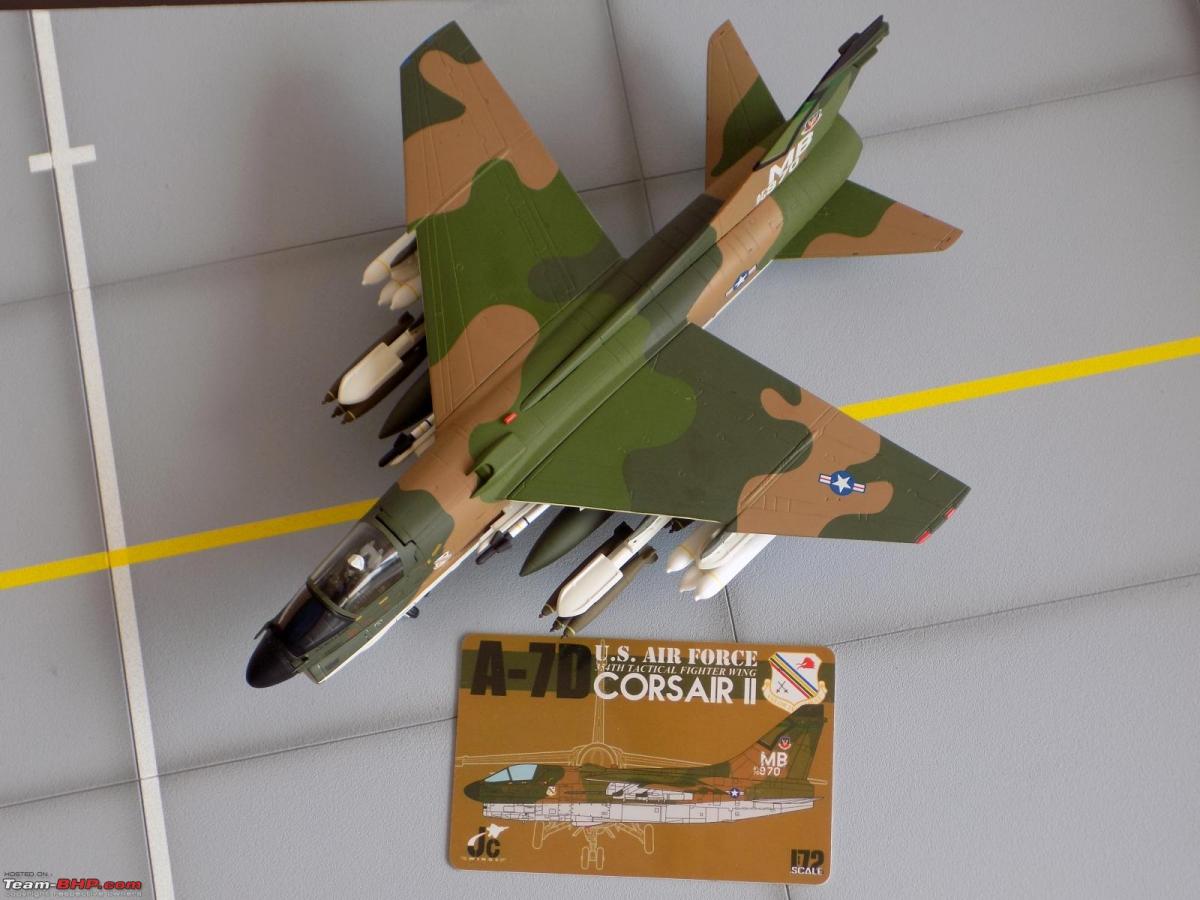


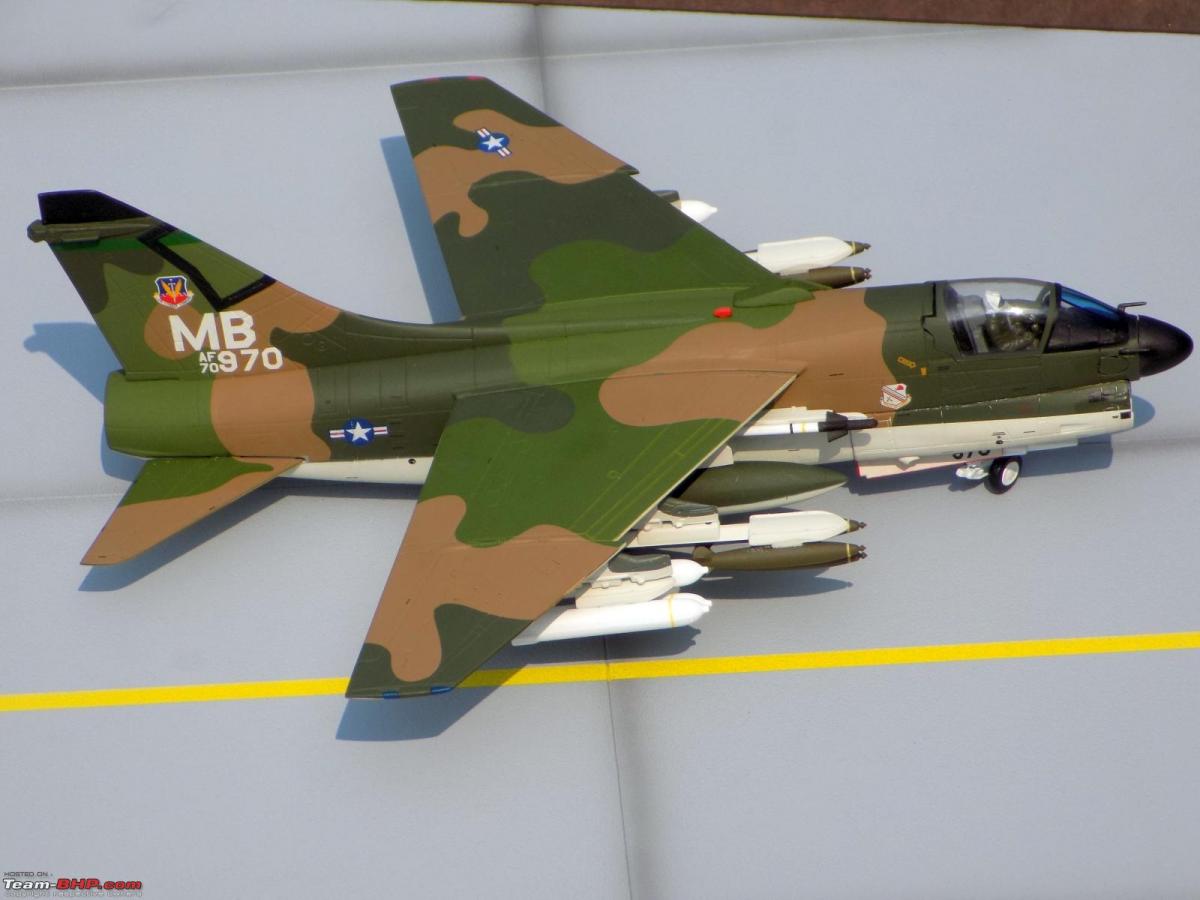

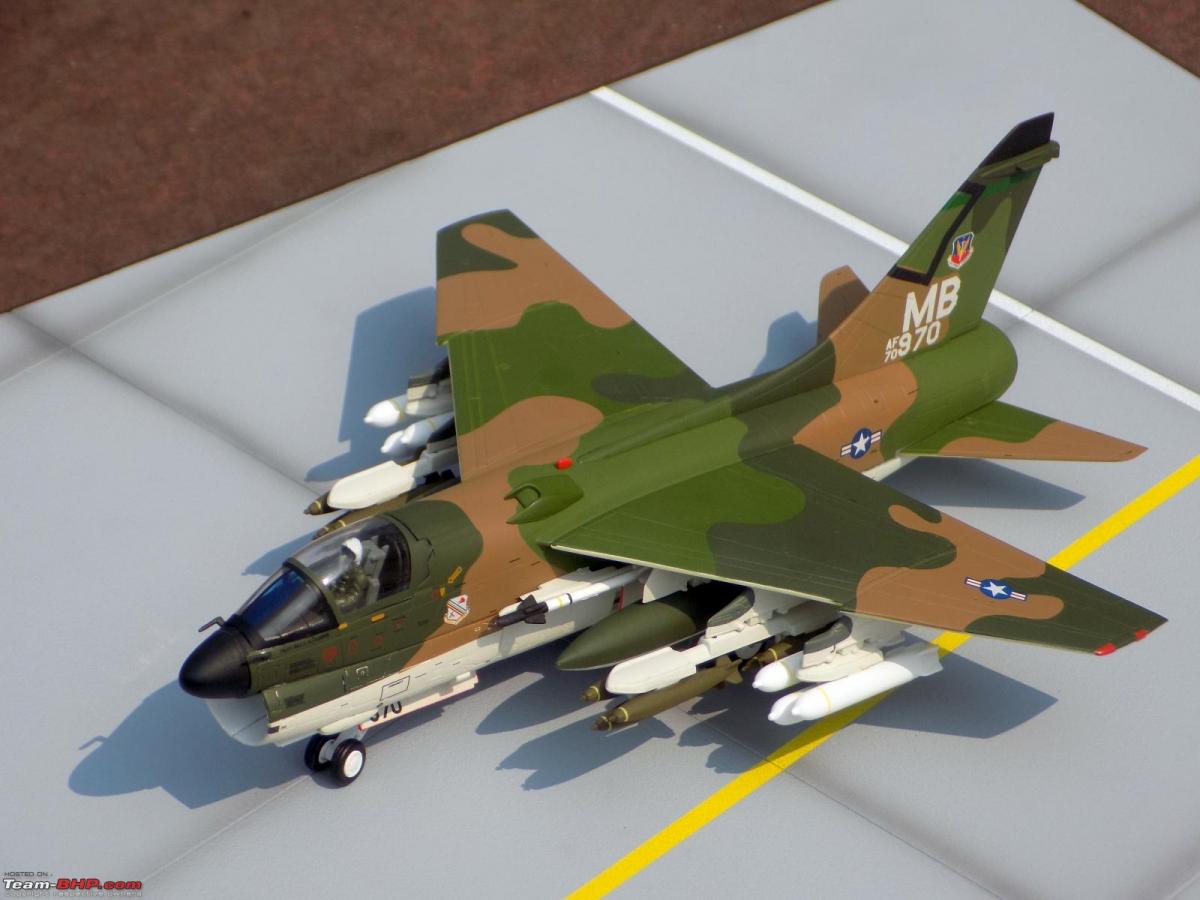
IFR receptacle above and behind the cockpit, offset to port.

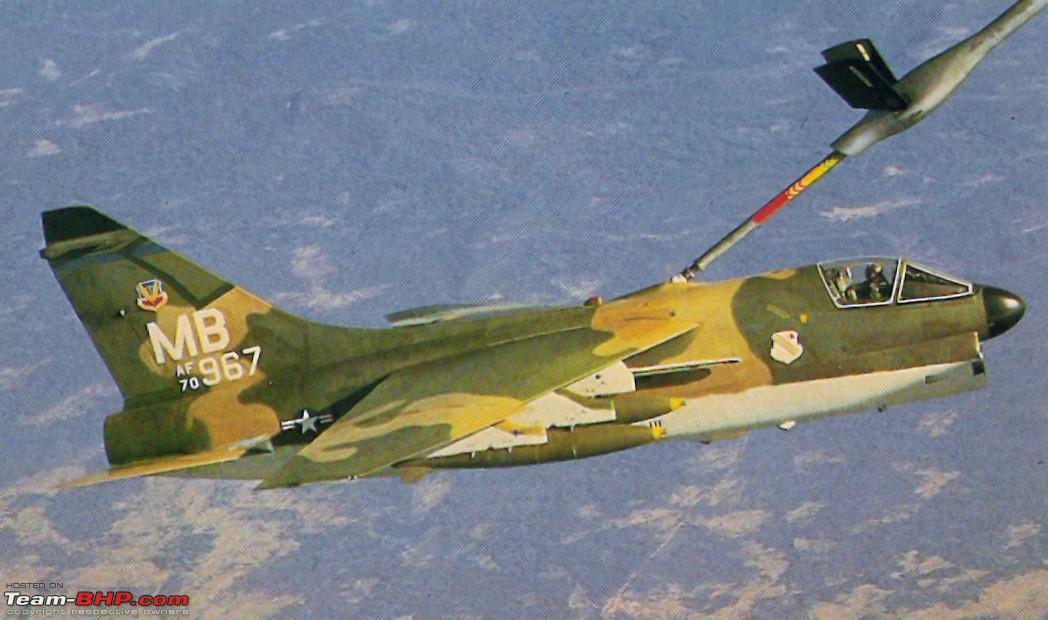

Check out BHPian comments for more insights and information.




